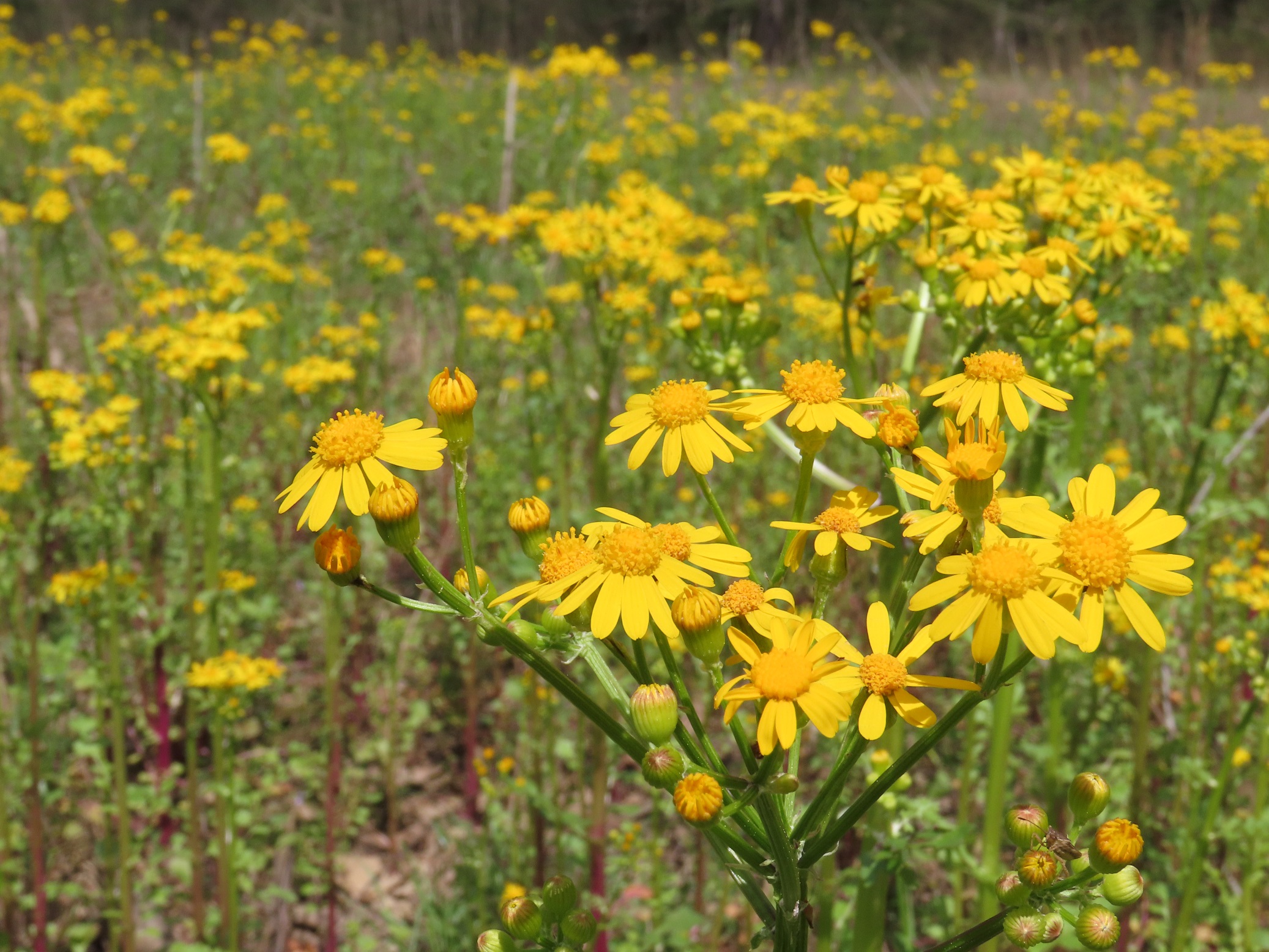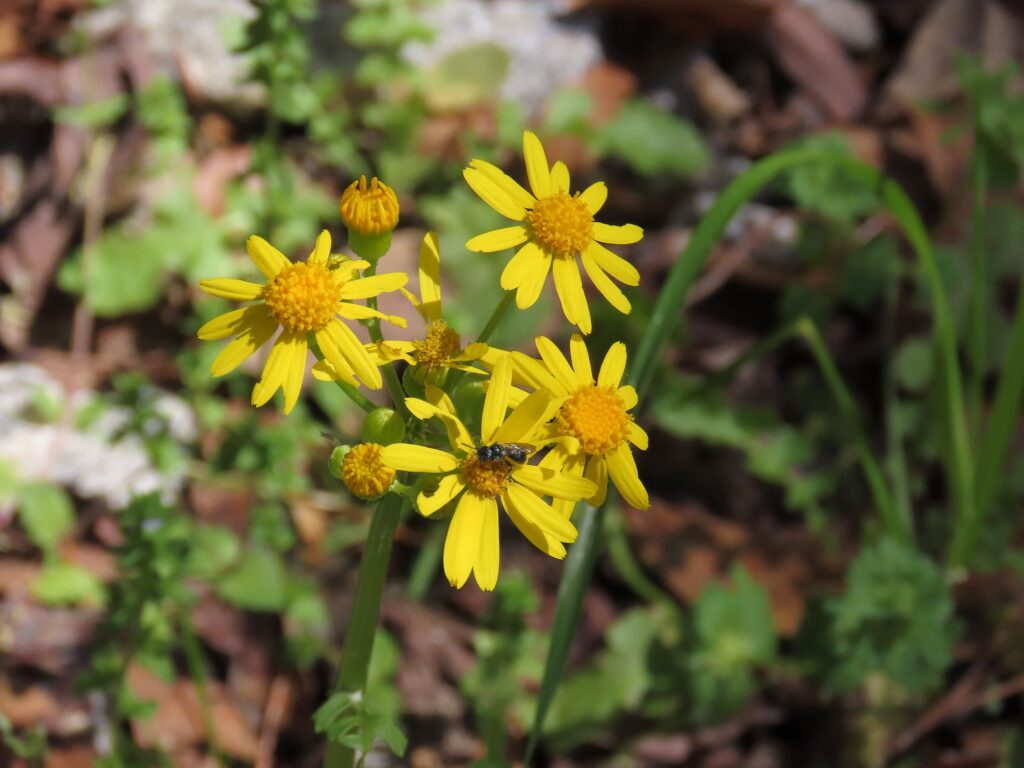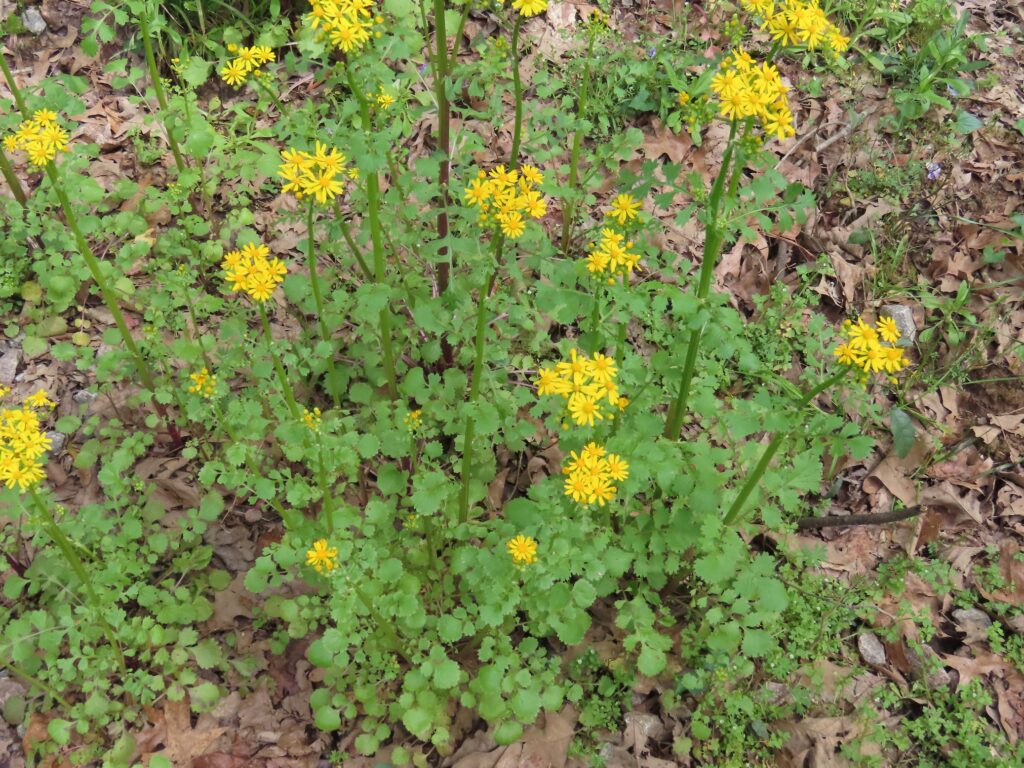



This week for Flora and Fauna Friday we have one of our first flowers of the floodplain forest, Butterweed (Packera glabella).
Butterweed is annual wildflower in the sunflower family, Asteraceae. It is found throughout the coastal plain and piedmont of South Carolina. Butterweed is a wetland plant, typically growing in sunny, disturbed, poorly drained, fertile soils in the lower floodplains of freshwater rivers, to include areas such as fields, swales, clear-cuts, power lines, bridges, or roadsides. It can be incredibly abundant under the right site conditions. It grows from about knee to waist high, generally in disorganized clumps with a weedy appearance. Its stem is thick, ribbed, and hollow with a blush of purple-red darkening towards the base and along the ridges of the stem. Its leaves are pinnately compound with uneven, round, and toothed leaflets that expand in size as you move towards the tip of the leaf. The real defining characteristic of Butterweed, and its namesake, are its buttery yellow flowers. Butterweed bears a prolific profusion of brilliant flowers at the top of the flower stalk. The flowers have lemon-yellow petals and a rich yolk-yellow center. Each flower is about a three-quarters of an inch wide and the flower clusters are mostly flat but with a slight dome. Butterweed blooms throughout March and April, peaking at the start of April. These flowers are frequented by many species of pollinators, of all shapes and sizes.
Butterweed, and the other Ragworts in genus Packera, are avoided by White-tailed Deer and other native herbivores. This avoidance is due to their toxicity and allows Butterweed to grow more or less undisturbed. Butterweed foliage contains pyrrolizidine alkaloids, which cause acute liver damage and impair the nervous system in mammals that eat their foliage, even at fairly low concentrations. This can be dangerous to horses and cattle that are pastured in floodplain fields or fed hay harvested from these areas. So although Butterweed is an easy to grow and fairly pest-free pollinator plant, it is best kept out of home gardens, as it can readily volunteer and could become a hazard to foraging pets.